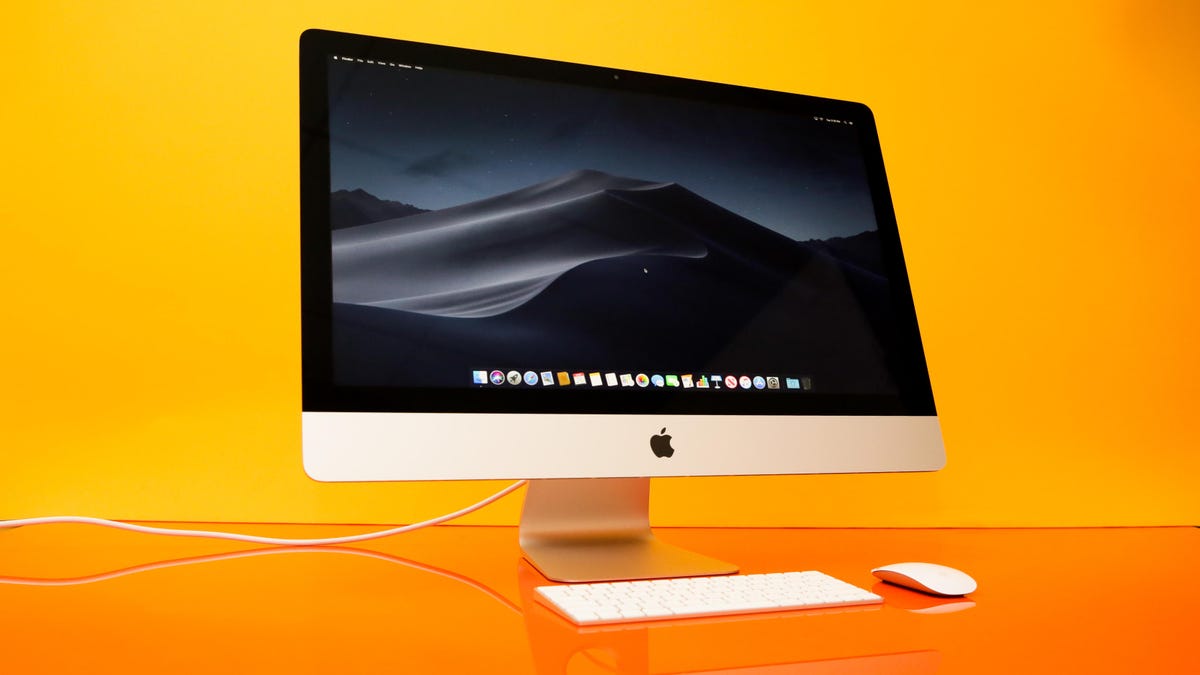Maxed-out iMac vs. entry-level iMac Pro: What's the best $5,000 Apple desktop you can buy?
For anyone ready to walk into an Apple store with five grand in their pocket, here's how to get the most iMac for your money.

Do you need a workstation CPU? That's the main question you need to answer before shelling out $5,000 (£4,899, AU$7,299) for the entry-level configuration of the Apple iMac Pro rather than a top-level configuration of the new iMac. There are other considerations, but the CPU is ultimately what the decision comes down to. Because the iMac is now powerful enough for what most people who are gazing longingly at that bottom Pro model need to do.
That's because a workstation CPU determines how professional applications work with your system, and in some cases, what features they'll "unlock" for you, as well as offering more sophisticated security. (It used to mean more processor cores, but there are now consumer CPUs with up to 18 cores from Intel and AMD CPUs with up to 32 cores thanks to the core wars.)
Since the CPU in an all-in-one isn't upgradable, that's what you're stuck with for the life of the system -- you can always add an external GPU to upgrade the graphics processing with either system, for example.
The iMac Pro has two more USB-C ports than a standard iMac, a 10Gb Ethernet connection and an SD card slot that can be used with UHS-II cards. It's also designed to handle faster (i.e., hotter-running) components, with extra ventilation at the bottom.
You might think that the iMac Pro has some other important differences from the iMac, and you'd be right:
- It can support up to four additional 4K displays rather than the iMac's two, or two additional 5K monitors rather than just one, thanks to the two extra USB-C/Thunderbolt ports.
- It has a higher-bandwidth Ethernet connection, 10Gb versus the iMac's 1Gb.
- It supports up to 256GB RAM, including error-correcting ECC memory, which is important for high-precision calculations.
But I'd argue that if you need a lot of high-resolution monitors or a big network pipe, or run applications that need ECC memory (and a lot of it), you shouldn't be buying the base-model iMac Pro. You should probably be spending more on a higher-power configuration. And if you're worried about future upgradability, you might want to wait and see if Apple manages to get its promised modular Mac Pro out the door this year, anyway.
For the same money as the iMac Pro base configuration, you can get an iMac with the Intel Core i9-9900K processor and AMD Radeon Pro Vega 48 GPU plus:
- 1TB SSD and 32GB RAM for $4,249, £4,004, AU$6,669 (the same memory and storage capacity as the entry-level iMac Pro)
- 1TB SSD and 64GB RAM for $4,649, £4,364, AU$7,309
- 2TB SSD and 32GB RAM for $4,849, £4,544, AU$7,629
The iMac's Vega 48 isn't quite as powerful as the Vega 56 in the iMac Pro, but if you've got GPU-bound applications, you probably want the Vega 64, anyway, because it has more memory (16GB versus 8GB). And with the money you save by getting the 1TB/32GB iMac, you can buy yourself a pretty nice second monitor.

